Growing Romaine Lettuce Hydroponically might sound like something out of a sci-fi movie, but trust me, it’s easier than you think! Forget battling garden pests and unpredictable weather; with a simple hydroponic setup, you can enjoy fresh, crisp romaine lettuce right in your own home, all year round.
Hydroponics, the art of growing plants without soil, has ancient roots. From the Hanging Gardens of Babylon to the floating gardens of the Aztecs, humans have been experimenting with soilless cultivation for centuries. Today, it’s experiencing a modern renaissance as people seek sustainable and efficient ways to produce their own food. And let’s be honest, who wouldn’t want a constant supply of delicious romaine for salads, wraps, and more?
I know what you’re thinking: “Hydroponics? That sounds complicated!” But that’s where this DIY guide comes in. I’m going to break down the process of growing romaine lettuce hydroponically into simple, manageable steps. Whether you’re a seasoned gardener or a complete beginner, you’ll be amazed at how easy it is to create your own indoor lettuce oasis. Say goodbye to store-bought lettuce that wilts in days and hello to fresh, flavorful greens whenever you want them. Let’s get started!
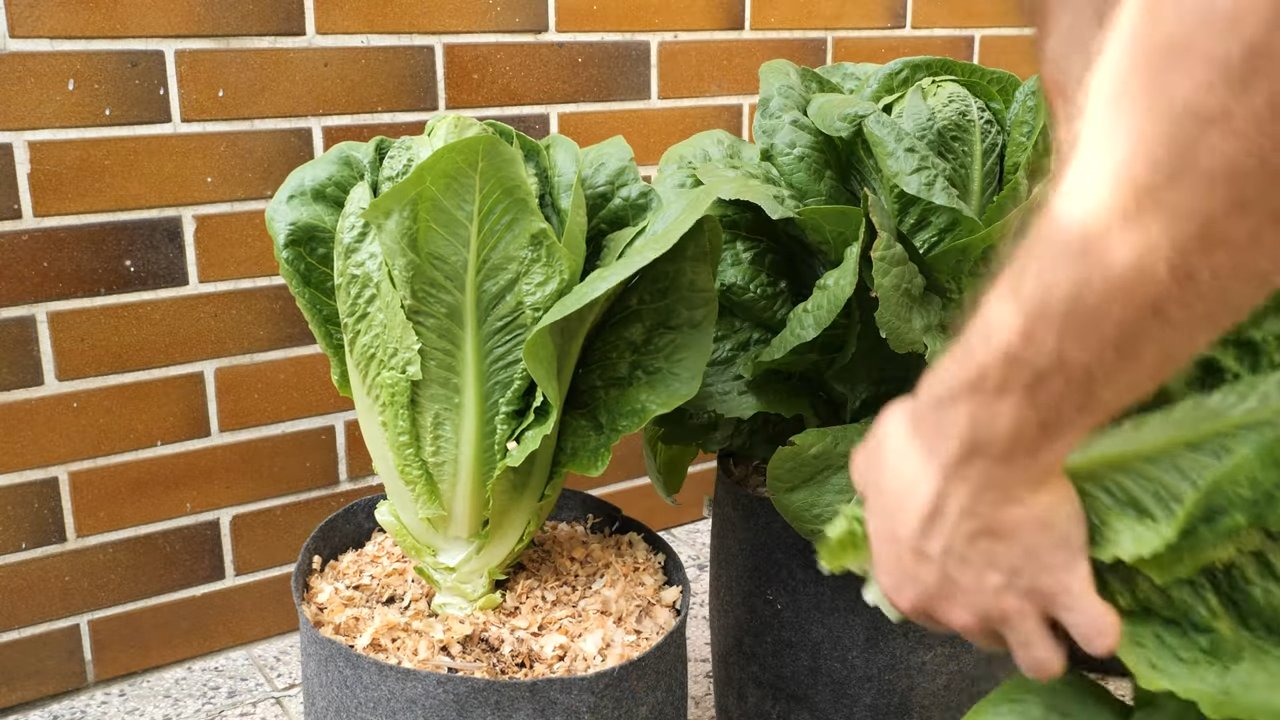
Growing Romaine Lettuce Hydroponically: A Beginner’s Guide
Hey there, fellow plant enthusiasts! Ever dreamt of having fresh, crisp romaine lettuce right at your fingertips, year-round? Well, you can make that dream a reality with hydroponics! It might sound intimidating, but trust me, growing romaine lettuce hydroponically is surprisingly easy and incredibly rewarding. I’m going to walk you through the whole process, step-by-step, so you can enjoy delicious, homegrown lettuce in no time.
Choosing Your Hydroponic System
Before we dive into the nitty-gritty, let’s talk about the type of hydroponic system you’ll want to use. There are several options, but for romaine lettuce, I recommend one of these two:
* Deep Water Culture (DWC): This is probably the simplest and most beginner-friendly system. Your lettuce roots are suspended in a nutrient-rich water solution, constantly aerated by an air pump and air stone. It’s inexpensive to set up and maintain.
* Kratky Method: Similar to DWC, but without the air pump! The water level is initially high enough to reach the seedling roots, and as the plant grows and drinks the water, an air gap forms, providing the roots with oxygen. It’s even simpler than DWC, making it perfect for absolute beginners.
For this guide, I’ll focus on the DWC method because it’s what I personally use and find most reliable for consistent growth.
Gathering Your Supplies
Okay, let’s get our hands dirty (well, not literally, since it’s hydroponics!). Here’s what you’ll need:
* Container: A dark-colored, opaque container is best to prevent algae growth. A 5-gallon bucket works perfectly.
* Net Pots: These will hold your lettuce seedlings and allow the roots to access the nutrient solution. 2-inch net pots are a good size.
* Growing Medium: Rockwool cubes, coco coir, or even clay pebbles (LECA) are all great options for starting your seeds. I prefer rockwool because it’s easy to use and retains moisture well.
* Air Pump and Air Stone: Essential for oxygenating the nutrient solution in DWC. Choose an air pump that’s appropriately sized for your container.
* Air Tubing: To connect the air pump to the air stone.
* Nutrient Solution: Specifically formulated for leafy greens. Look for a balanced hydroponic nutrient solution that contains all the essential macronutrients and micronutrients.
* pH Meter or pH Test Strips: Crucial for monitoring and adjusting the pH of the nutrient solution. Lettuce prefers a pH between 5.5 and 6.5.
* pH Up and pH Down Solutions: To adjust the pH of the nutrient solution as needed.
* Romaine Lettuce Seeds: Choose your favorite variety!
* Seed Starting Tray and Dome (Optional): Makes seed starting easier, but you can also use a simple container with a lid.
* Grow Light (Optional): If you don’t have a sunny spot, a grow light will provide the necessary light for your lettuce to thrive.
* Drill and Hole Saw (Optional): If your container doesn’t already have holes for the net pots.
Starting Your Seeds
Now for the fun part – planting!
1. Soak Your Growing Medium: If you’re using rockwool, soak the cubes in pH-balanced water (around 5.5-6.0) for a few hours before planting. This helps to remove any excess alkalinity. Coco coir should also be rinsed and soaked.
2. Sow Your Seeds: Place 2-3 romaine lettuce seeds in each rockwool cube or coco coir pellet. Gently press them into the medium.
3. Provide Light and Moisture: Place the seed starting tray under a grow light or in a sunny window. Keep the growing medium consistently moist, but not waterlogged. A humidity dome can help retain moisture.
4. Germination: Romaine lettuce seeds typically germinate within 3-7 days. Once the seedlings emerge, remove the humidity dome and ensure they have adequate light.
Preparing Your DWC System
While your seeds are germinating, let’s get your DWC system ready.
1. Prepare Your Container: If your container doesn’t have holes for the net pots, use a hole saw to drill holes in the lid that are slightly smaller than the diameter of the net pots. This will ensure a snug fit.
2. Assemble the Air System: Connect the air tubing to the air pump and the air stone. Place the air stone at the bottom of the container.
3. Mix Your Nutrient Solution: Follow the instructions on your nutrient solution bottle to mix the appropriate concentration. Use pH-balanced water (around 5.5-6.5) to mix the solution.
4. Check and Adjust pH: Use your pH meter or test strips to check the pH of the nutrient solution. Adjust the pH to between 5.5 and 6.5 using pH Up or pH Down solutions as needed.
5. Fill the Container: Pour the nutrient solution into the container, leaving a few inches of space at the top.
Transplanting Your Seedlings
Once your seedlings have developed a few sets of true leaves (usually after 2-3 weeks), they’re ready to be transplanted into your DWC system.
1. Gently Remove Seedlings: Carefully remove the seedlings from the seed starting tray, being careful not to damage the roots.
2. Place in Net Pots: Place each seedling (still in its rockwool cube or coco coir pellet) into a net pot. You can use a small amount of clay pebbles or other inert growing medium around the cube to help stabilize it in the net pot.
3. Position in DWC System: Place the net pots into the holes in the lid of your DWC container. The bottom of the rockwool cube should be just touching the nutrient solution. As the roots grow, they will extend further into the solution.
4. Turn on the Air Pump: Plug in the air pump to provide constant aeration to the nutrient solution.
Maintaining Your Hydroponic Lettuce
Now that your lettuce is in the DWC system, here’s how to keep it happy and healthy:
1. Monitor pH and Nutrient Levels: Check the pH of the nutrient solution regularly (at least once a week) and adjust as needed to maintain a pH between 5.5 and 6.5. Also, monitor the nutrient levels using an EC (electrical conductivity) meter if you have one. If the EC is too low, add more nutrient solution.
2. Change the Nutrient Solution: Replace the nutrient solution every 2-3 weeks to prevent nutrient imbalances and the buildup of harmful bacteria.
3. Provide Adequate Light: Romaine lettuce needs at least 6 hours of light per day. If you’re growing indoors, use a grow light to supplement natural light.
4. Maintain Proper Temperature: Romaine lettuce prefers temperatures between 60°F and 70°F (15°C and 21°C).
5. Watch for Pests and Diseases: While hydroponics reduces the risk of soilborne pests and diseases, it’s still important to monitor your lettuce for any signs of problems. Common pests include aphids and spider mites. Treat any infestations promptly with appropriate organic pest control methods.
6. Top off the water level: As the lettuce grows, it will absorb water from the nutrient solution. Make sure to top off the water level with pH balanced water so the roots are always submerged.
Harvesting Your Romaine Lettuce
The best part! You can start harvesting your romaine lettuce when the leaves are about 6-8 inches long.
1. Harvest Outer Leaves: You can harvest the outer leaves as needed, allowing the inner leaves to continue growing. This is known as the “cut-and-come-again” method.
2. Harvest the Whole Head: Alternatively, you can harvest the entire head of lettuce by cutting it off at the base.
3. Enjoy Your Fresh Lettuce! Rinse the harvested lettuce leaves and enjoy them in salads, sandwiches, or wraps.
Troubleshooting Tips
Even with the best care, you might encounter some challenges along the way. Here are a few common problems and how to address them:
* Yellowing Leaves: This could be a sign of nutrient deficiency, pH imbalance, or overwatering. Check the pH and nutrient levels and adjust as needed. Ensure the roots are getting enough oxygen.
* Slow Growth: This could be due to insufficient light, low temperatures, or nutrient deficiencies. Provide more light, maintain proper temperatures, and check the nutrient levels.
* Algae Growth: Algae growth can occur if the container is exposed to too much light. Use a dark-colored container and cover any exposed areas with opaque tape.
* Root Rot:
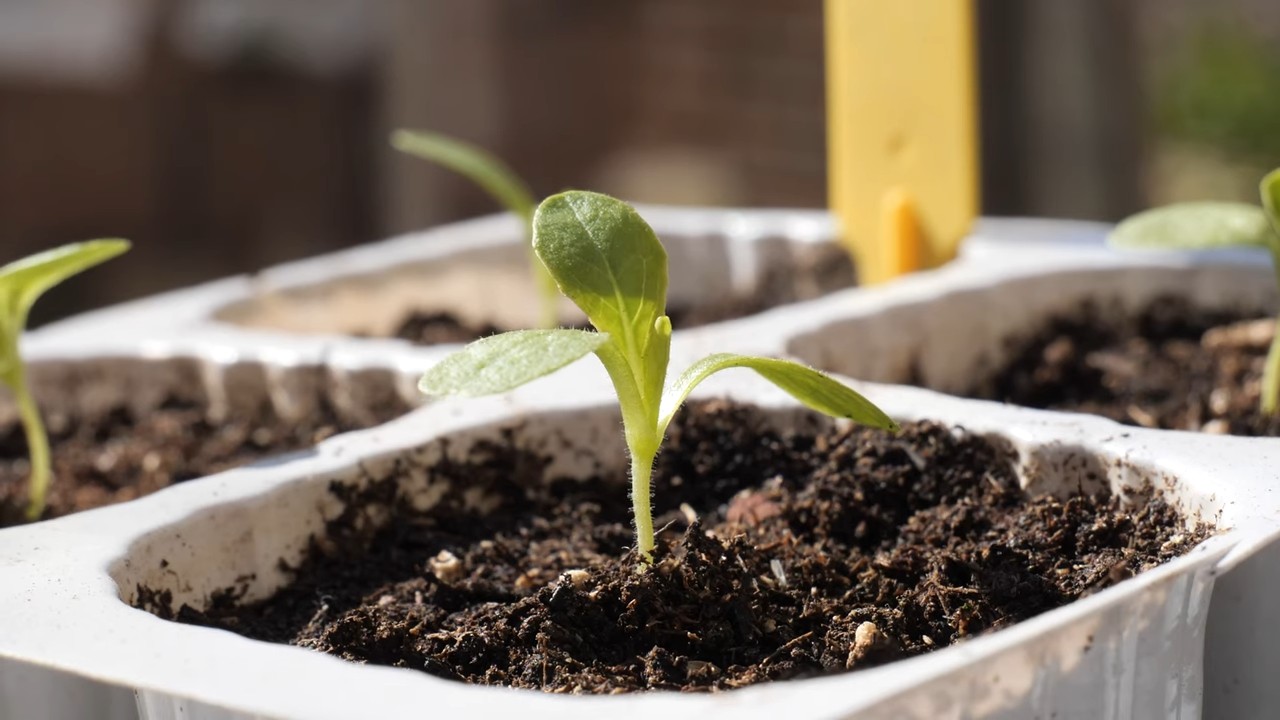
Conclusion
So, there you have it! Growing Romaine Lettuce Hydroponically is not just a trendy gardening experiment; it’s a game-changer for fresh, readily available greens. We’ve walked you through the process, demystifying each step and highlighting the incredible benefits this method offers. From the rapid growth rates to the reduced risk of pests and diseases, hydroponics provides a superior environment for cultivating crisp, delicious Romaine.
But why is this DIY trick a must-try? It boils down to control, convenience, and quality. You’re in complete control of the nutrients your lettuce receives, ensuring optimal growth and flavor. The convenience of having fresh lettuce just steps away from your kitchen is unparalleled, eliminating those last-minute grocery store runs. And the quality? Hydroponically grown Romaine boasts a superior texture and taste, free from the soil-borne contaminants that can sometimes plague traditional gardening.
Beyond the basic setup, there’s a world of variations to explore. Experiment with different nutrient solutions to fine-tune the flavor profile of your lettuce. Try adding companion plants like basil or chives to your hydroponic system for added benefits and a more diverse harvest. Consider using different growing mediums, such as coco coir or rockwool, to see which works best for your setup and preferences. You can even explore different hydroponic systems, like deep water culture (DWC) or nutrient film technique (NFT), as you become more experienced.
Don’t be intimidated by the initial setup. Start small, with a simple Kratky system, and gradually expand as you gain confidence. The rewards are well worth the effort. Imagine the satisfaction of harvesting your own fresh Romaine lettuce, knowing exactly where it came from and how it was grown. Picture the vibrant green leaves adding a burst of flavor and nutrition to your salads, sandwiches, and wraps.
We wholeheartedly encourage you to give this DIY hydroponic trick a try. It’s a rewarding experience that will transform the way you think about fresh produce. And most importantly, we want to hear about your journey! Share your successes, your challenges, and your unique variations in the comments below. Let’s build a community of hydroponic enthusiasts, sharing knowledge and inspiring each other to grow the freshest, most delicious Romaine lettuce possible. Your insights could be invaluable to other aspiring hydroponic gardeners. So, get your hands dirty (or rather, wet!), embrace the world of hydroponics, and enjoy the bounty of your own homegrown Romaine lettuce. Happy growing!
Frequently Asked Questions (FAQ)
What exactly is hydroponics, and why is it better than growing Romaine lettuce in soil?
Hydroponics is a method of growing plants without soil, using water-based nutrient solutions to deliver essential elements directly to the roots. It offers several advantages over traditional soil-based gardening. Firstly, it allows for faster growth rates because the plants don’t have to expend energy searching for nutrients in the soil. Secondly, it reduces the risk of soil-borne diseases and pests, leading to healthier plants and higher yields. Thirdly, it conserves water, as the nutrient solution is recirculated and reused. Finally, it provides greater control over the growing environment, allowing you to optimize conditions for Romaine lettuce growth.
What are the essential materials I need to start growing Romaine lettuce hydroponically?
To get started, you’ll need a container to hold the nutrient solution (a bucket, tub, or even a repurposed plastic container will work), a net pot or other support to hold the lettuce seedling, a growing medium like coco coir or rockwool, a nutrient solution specifically formulated for leafy greens, an air pump and air stone (for some systems), and of course, Romaine lettuce seeds or seedlings. You’ll also need a light source, either natural sunlight or a grow light, depending on your indoor environment. A pH meter and TDS (Total Dissolved Solids) meter are helpful for monitoring and adjusting the nutrient solution.
How do I choose the right nutrient solution for my hydroponic Romaine lettuce?
Look for a nutrient solution specifically formulated for leafy greens or vegetables. These solutions typically have a higher nitrogen content, which is essential for leaf growth. Pay attention to the N-P-K ratio (Nitrogen, Phosphorus, Potassium) on the label. A ratio of around 3-1-2 or 4-1-2 is generally suitable for Romaine lettuce. Follow the manufacturer’s instructions carefully when mixing the nutrient solution, and regularly monitor the pH and TDS levels to ensure they are within the optimal range for Romaine lettuce (pH 5.5-6.5, TDS 800-1200 ppm).
How often should I change the nutrient solution in my hydroponic system?
The frequency of nutrient solution changes depends on the size of your system and the growth rate of your lettuce. As a general rule, change the nutrient solution every 1-2 weeks. However, if you notice the solution becoming cloudy, discolored, or developing an unpleasant odor, change it immediately. Regularly monitoring the pH and TDS levels will also help you determine when a change is needed.
What kind of lighting is best for growing Romaine lettuce hydroponically indoors?
Romaine lettuce needs adequate light to thrive. If you’re growing indoors, you’ll need to supplement natural light with grow lights. LED grow lights are a popular choice because they are energy-efficient and produce very little heat. Fluorescent grow lights are another option, but they are less efficient than LEDs. The amount of light needed depends on the intensity of the light and the distance from the plants. Aim for at least 14-16 hours of light per day.
How do I prevent algae growth in my hydroponic system?
Algae growth is a common problem in hydroponic systems, especially those exposed to light. To prevent algae growth, keep the nutrient solution covered and shielded from light as much as possible. Use opaque containers and tubing. You can also add a small amount of hydrogen peroxide to the nutrient solution to help control algae growth. Regularly clean your system to remove any algae that does develop.
What are some common problems I might encounter when growing Romaine lettuce hydroponically, and how can I fix them?
Some common problems include nutrient deficiencies, pH imbalances, pest infestations, and root rot. Nutrient deficiencies can be identified by discoloration or stunted growth of the leaves. Adjust the nutrient solution accordingly. pH imbalances can also affect nutrient uptake. Use a pH meter to monitor the pH and adjust it as needed. Pest infestations are less common in hydroponics than in soil-based gardening, but they can still occur. Inspect your plants regularly for pests and take appropriate measures to control them. Root rot is caused by anaerobic conditions in the root zone. Ensure that your system has adequate aeration to prevent root rot.
Can I grow other types of lettuce or vegetables in the same hydroponic system as Romaine lettuce?
Yes, you can grow other types of lettuce and leafy greens in the same hydroponic system as Romaine lettuce, as long as they have similar nutrient requirements and growth rates. Some good companion plants for Romaine lettuce include spinach, kale, arugula, and herbs like basil and chives. Avoid growing plants with significantly different nutrient needs or growth rates in the same system, as this can lead to competition and reduced yields.
How do I harvest my hydroponically grown Romaine lettuce?
You can harvest your Romaine lettuce when the leaves are large enough to eat, typically about 6-8 inches long. You can either harvest the entire head of lettuce at once, or you can harvest individual leaves as needed, allowing the plant to continue growing and producing more leaves. To harvest the entire head, simply cut the stem at the base of the plant. To harvest individual leaves, gently pluck them from the outer layers of the plant.
How do I store my harvested Romaine lettuce to keep it fresh?
Store your harvested Romaine lettuce in the refrigerator in a plastic bag or container. To keep it crisp, wrap the lettuce in a damp paper towel before placing it in the bag or container. Properly stored, Romaine lettuce can last for up to a week in the refrigerator.


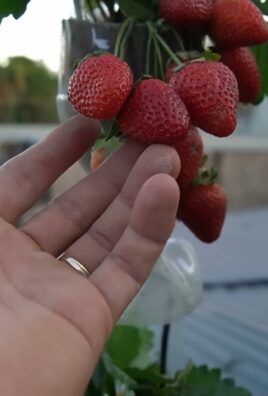
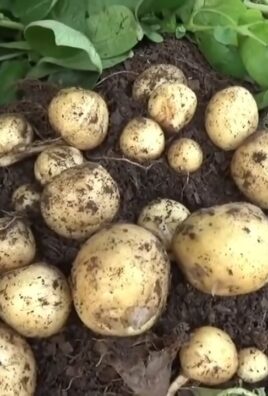
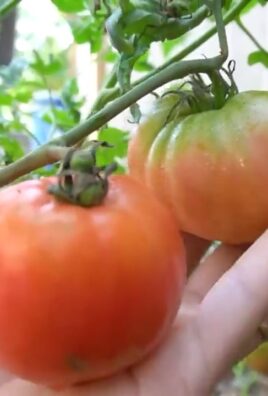
Leave a Comment